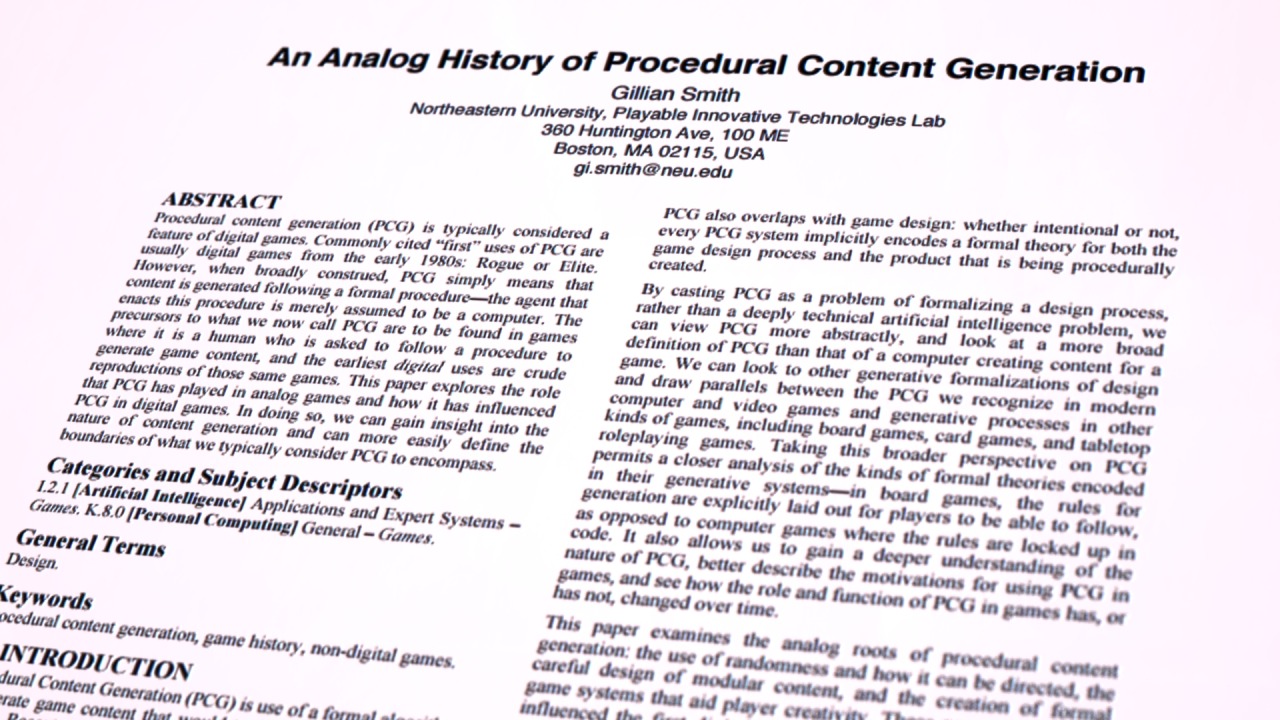
An Analog History of Procedural Content Generation
Procedural generation didn’t start with computers. While computational algorithms have played a big part in today’s wide range of generative forms, many techniques can and have used analog means to generate their results.
In this paper, Gillian Smith looks at some historical examples, such as the modularity of dungeon geomorphs used by D&D, the way that sounds were designed to work in arbitrary orderings in the Milton Bradley-published Simon game, and use of algorithmic assembly in D&D encounter tables. Modularity and directed randomness are themes that cross many different generative forms.
Gillian discusses some of the motivations take prompted people to explore procedural generation in the first place: replay value, creative assistance, and exploring a new expressive medium. These are still common goals today, but the paper points out that there is room for new goals, and that there’s room to find new purposes for using procedural generation.
She also mentions some motivations that have fallen by the wayside: having the computer as an unbiased agent, and replacing humans. These have been pretty prominent in the rhetoric of past procedural generation, but I agree that they are somewhat misguided: as Ian Bogost argues, algorithms can be, and often are, biased, and require a lot of design work. The designer is now operating at a higher level of abstraction, but it still requires the human input to shape the meaning.
Procedural generation doesn’t replace the painter. It’s more like giving the painter a paint gun.
